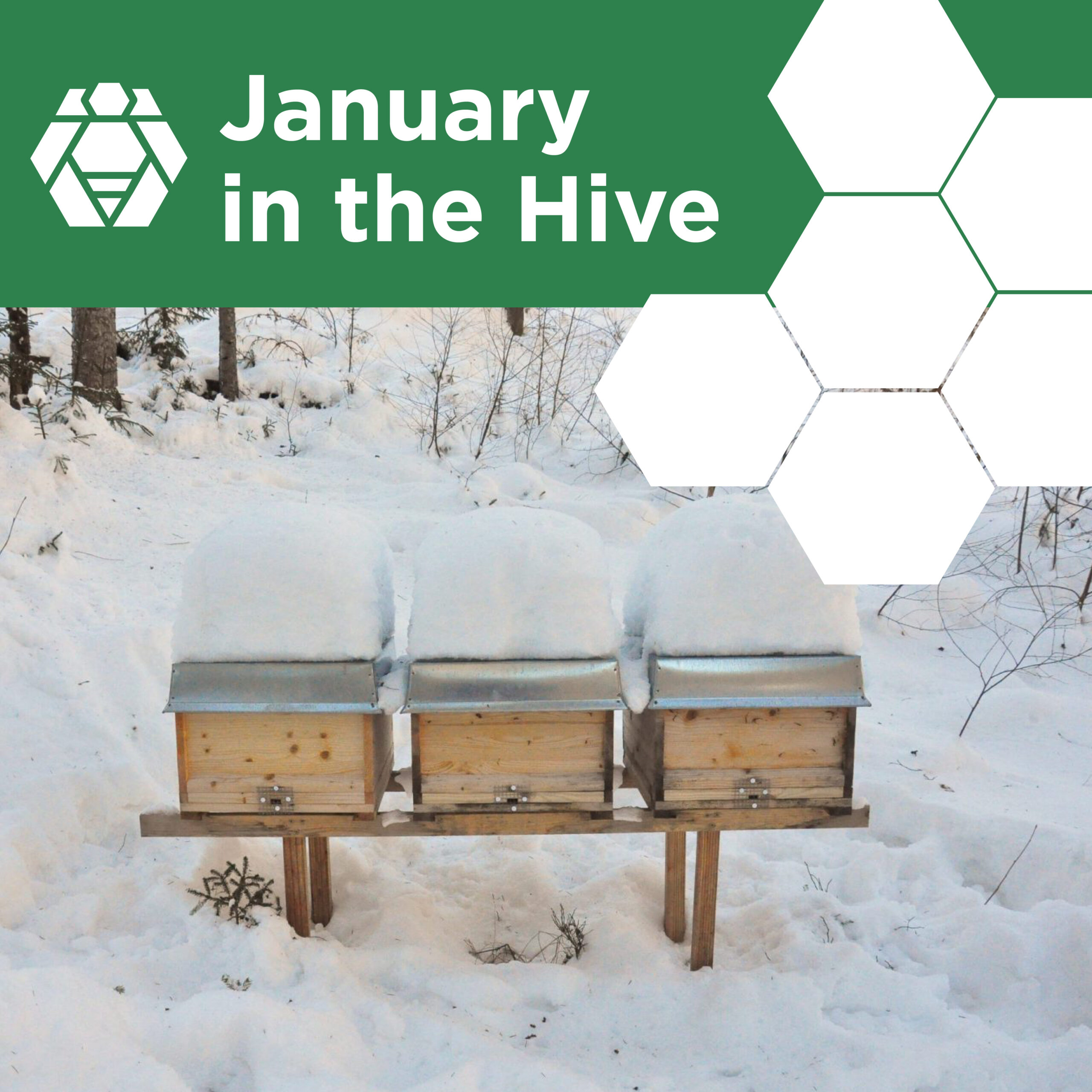
Now that the holidays are behind us, it’s time to turn our minds back on bees, which we’ve all probably forgotten about during the holiday hustle and bustle.
Since snow and bitter cold temperatures have moved in, our concern is whether our bees have enough food. Fortunately, bees are super conservative with their winter stores, so a well-stocked hive going into winter should have ample resources to make it through spring. The hives of greatest concern are the ones that a bit light, despite our fall feeding, going into winter. If you ask an old-school beekeeper, they will tell you that you just need to lift the back of the hive and if it takes more than two fingers then the bees are good. The idea is that you can tell just by lifting it. We might argue that this only works if you have experience judging the weight by lifting hives. Also, everyone has different strengths. So, we might be able to lift a hive with plenty of stores with two fingers and someone else might not be able to lift a starving hive with two fingers.
Is there a better way to judge the stores in the hive? To judge the stores without lifting, pop the outer cover and see if you can see bees at the top of the hive through the hole in your inner cover. Pick a day that is around the mid-30 degrees with little wind and precipitation. If you see your bees have moved up to cover new resources, then they are burning through resources and might need some supplemental feed. If your bees are boiling through the hole in the inner cover, then they are probably pretty close, if not out of food. This only works if you are wintering double deep hives because a single deep hive will not have enough space for the bees to be below the stores. If you can’t see any activity or you are wintering single deep hives, pop the inner cover and shine a light down the frames. You will be able to see the resources and where your bees are in the hive. Sometimes the cluster will move to the side of the hive that gets sun on short winter days and are not visible through the inner cover.
We all know there will be an uproar from beekeepers about opening hives in winter. Although we want to minimize interruptions to our hives in winter, the bees are not adversely affected by brief openings – and may starve without intervention. Bees warm their cluster to roughly 60 degrees unless they have brood then they maintain the temperature around 90 degrees. Notice the cluster temperature is maintained, the rest of the hive is only slightly warmer than outside temperatures. We should not be pulling frames, but as long as our interruptions are brief the bees will barely notice our intrusions.
Now that we have determined we need to provide some supplemental feed, how do we get in in the hive in a way the bees can use it? Liquid feed is out of the question, it will freeze and any bees that fall into it will never make it out. If a super with honey is available, adding the entire super box to the hive is a good option. Some like to make up fondant and place it over the cluster. Others like to use the Mountain Camp Method of feeding. The Mountain Camp Method is by far the easiest way to feed your bee in winter. This method can be done several ways, but can be achieved by simply pouring dry sugar on the inner cover, adding a spacer (empty supper box), then outer cover. This creates a space for the feed and the bees can come up as needed. Some remove the inner cover, place a piece of newspaper with small holes over the cluster, pour the dry sugar on top, add a spacer, and then return the covers.
However you choose to provide for your bees, these quick checks can be the difference for your bees. All hives should be checked every few weeks. One would be surprised at how quickly bees consume resources. A heavy hive today can burn through a super of resources in a few weeks if the conditions are right. On warmer days, bees consume more resources when flying. Keep this in mind as faults springs come and go. Many colonies that have made it through winter struggle in spring waiting for the trees and flowers to bloom.
